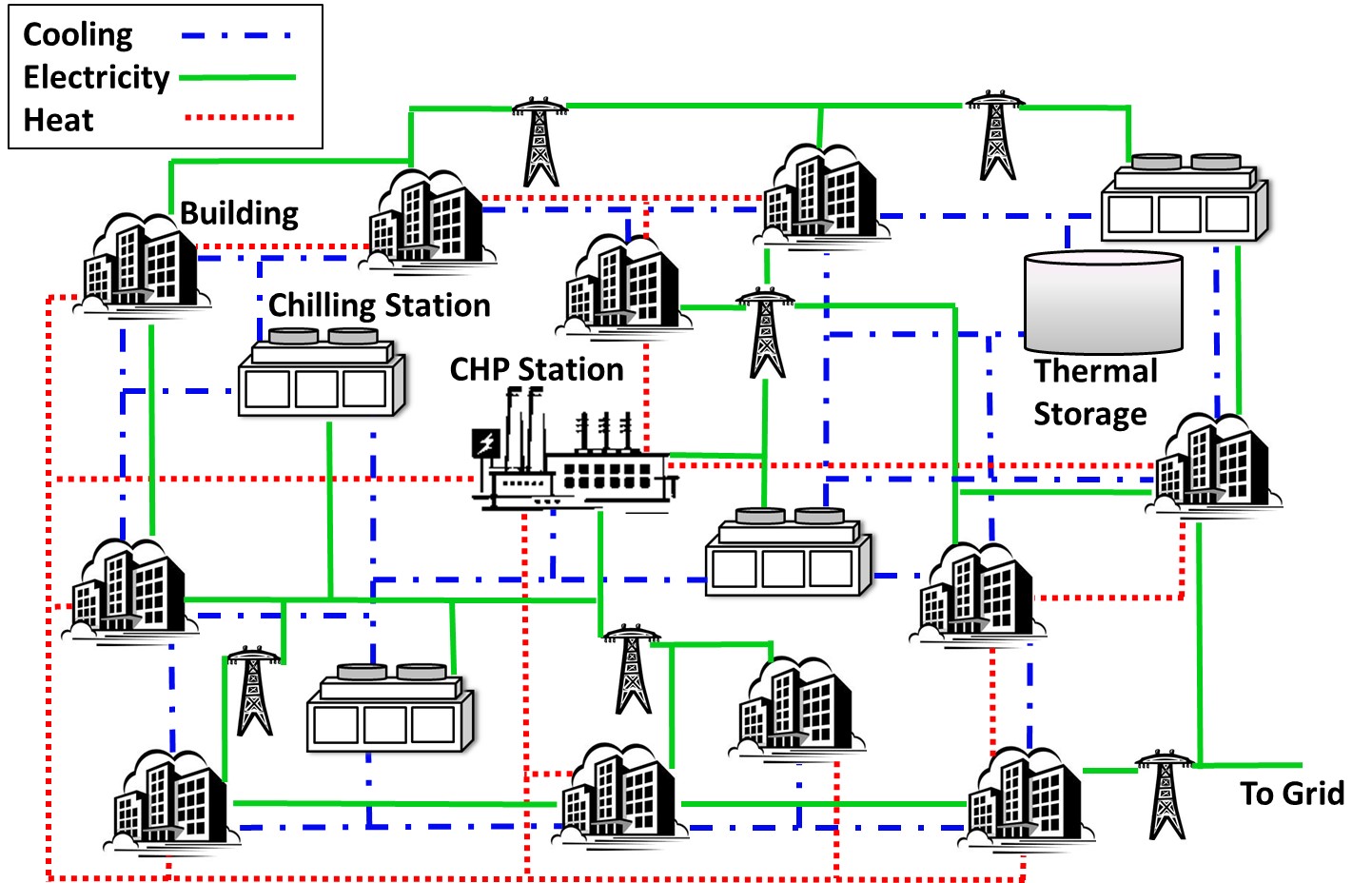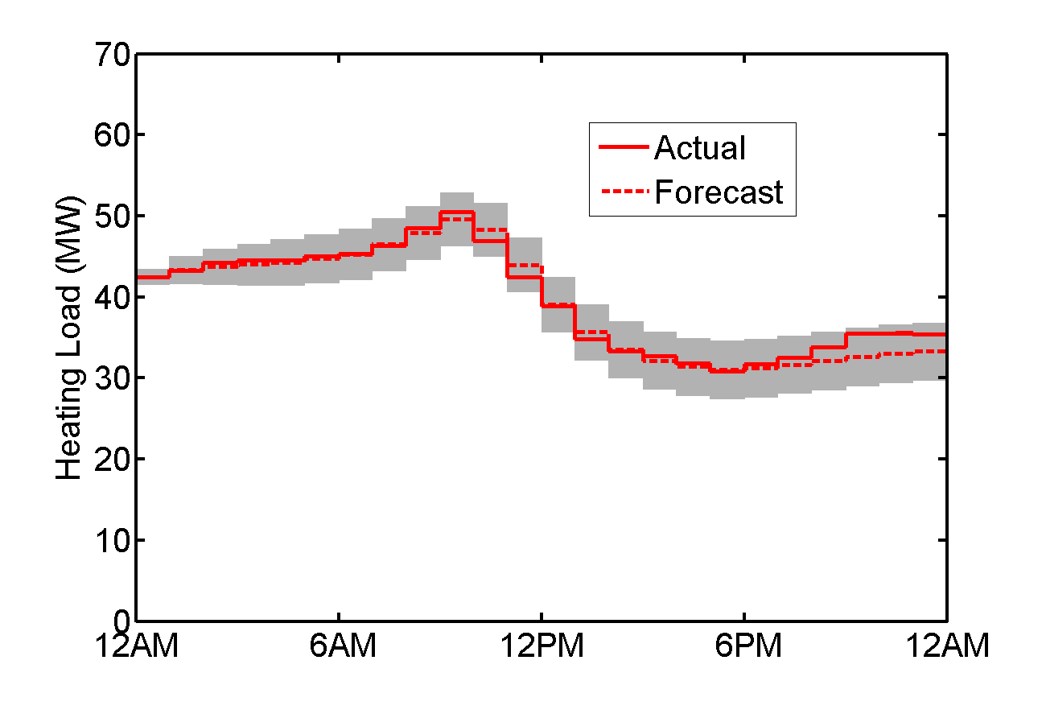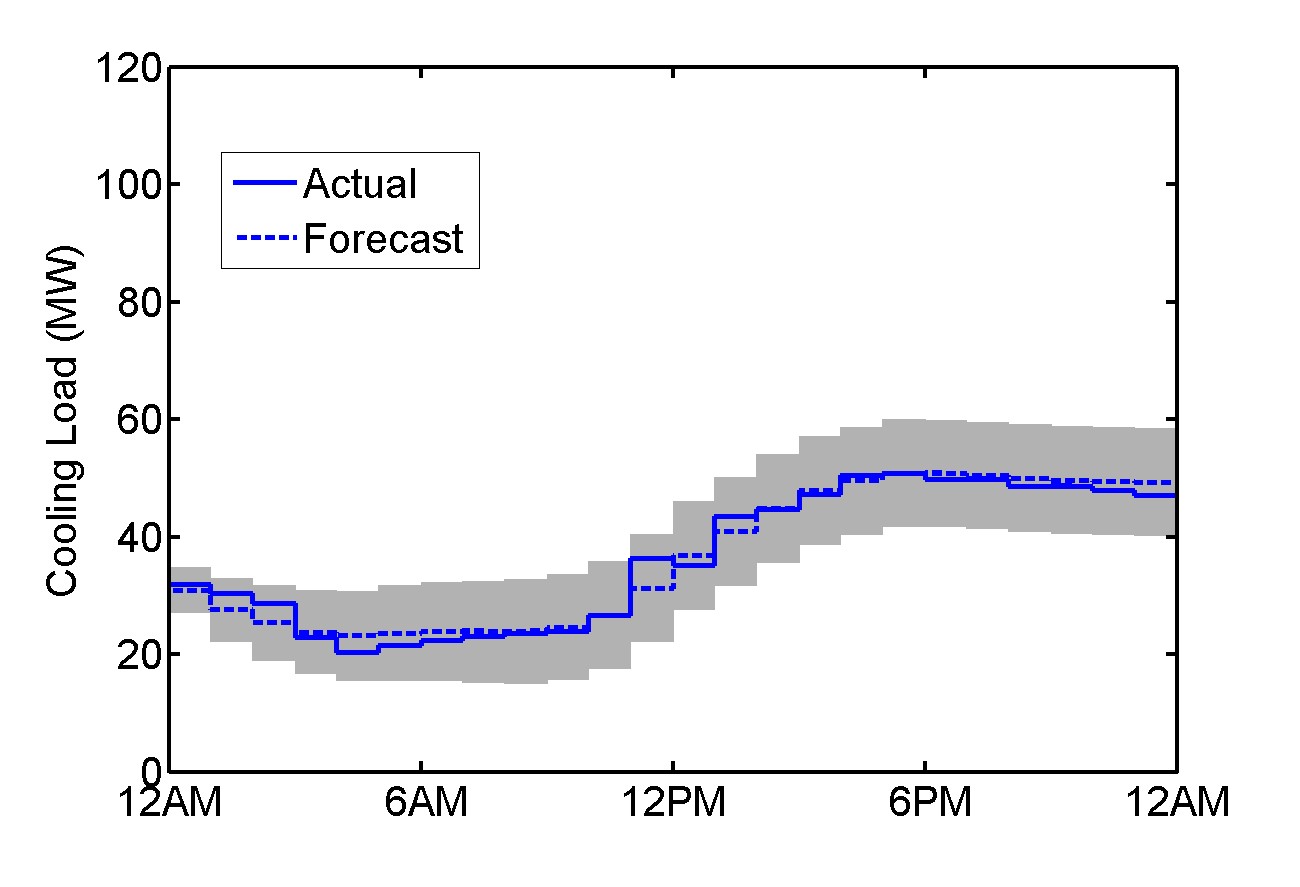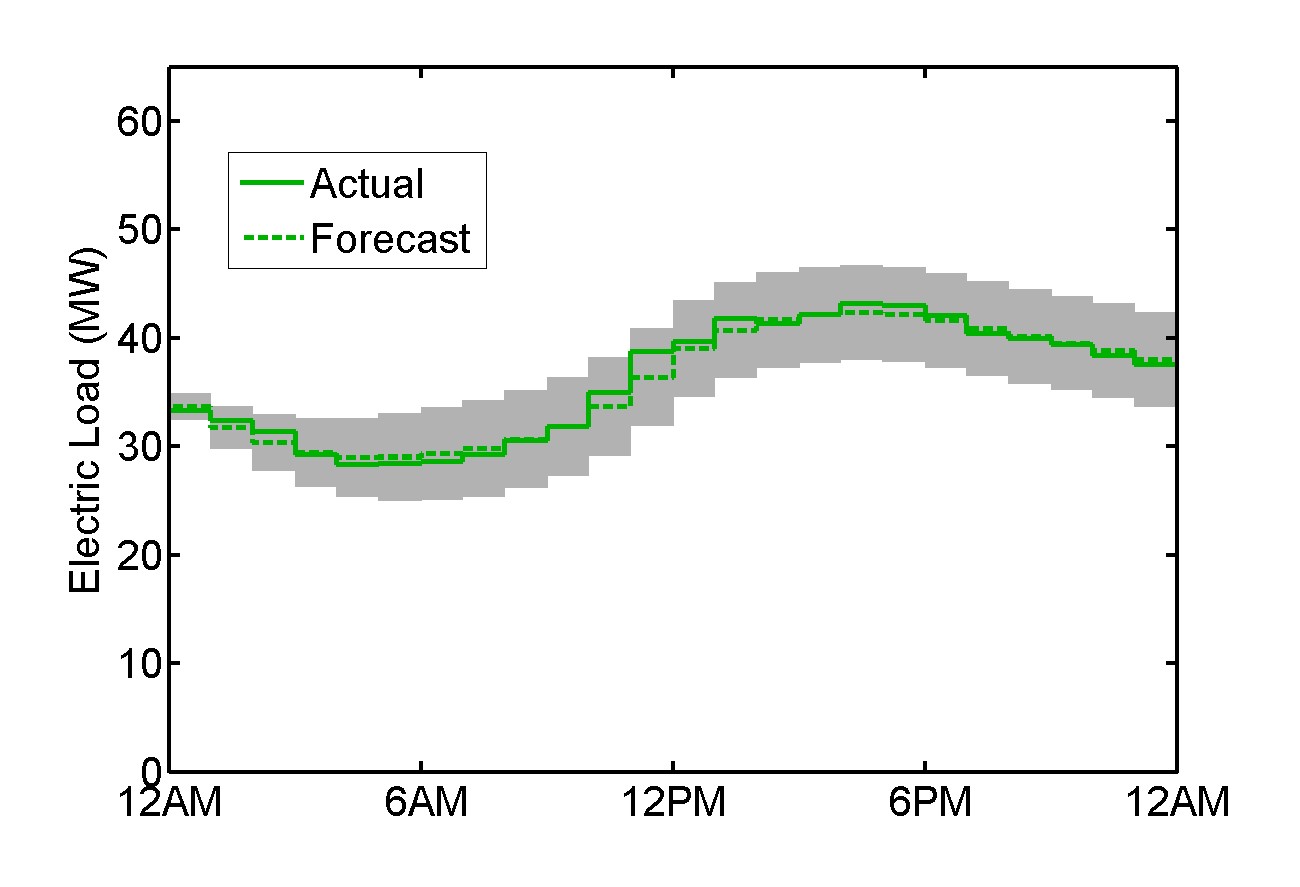Buildings consume about
40% of the energy in the United States, and are therefore an important focal point in terms of reducing energy consumption. Because the materials that buildings are made of can be used as thermal mass, smart control of building HVAC systems can transform ordinary office or residential buildings into a vast energy storage network. The first step in optimizing the energy performance of buildings is building smart process models to predict the energy consumption and temperatures inside buildings, subject to environmental conditions, such as ambient temperatures, building occupancy, etc.

Building energy consumption on a large scale (like for a university campus) can be modeled using large amounts of data and an empirical model. Using this methodology, loads can be forecast in advance, so that decisions about the system can be made pro-actively. Below are the prediction results for aggregate heating, cooling, and electrical load forecasts for the buildings of a university campus of roughly 50,000 students. The forecast is made knowing only the previous hours’ loads, the weather forecast for the next 24 hours, and information about time of day, day of week, month of year.



Using a forecast like this, in combination utility pricing data, decisions regarding a building’s HVAC control can be made pro-actively (subject to comfort constraints of the occupants, of course).
Heating, cooling, and electrical load forecasting for a university campus
Reduced-order residential home modeling for model predictive control
Improved large-scale process cooling operation for a building cooling network
Future Work
Although buildings consume large amounts of energy, each building typically operates independent of other buildings. The one control that utility providers may have on a large scale are price signals. How building HVAC systems (and the consumers themselves) respond to real-time pricing is a research topic that will add a lot of value. By exploring simplified HVAC control schemes to respond to real-time prices, some peak power problems can be alleviated. Instead of controlling the system purely from the supply side, the demand side of the equation can also respond to energy supply and demand mismatches.
 Building energy consumption on a large scale (like for a university campus) can be modeled using large amounts of data and an empirical model. Using this methodology, loads can be forecast in advance, so that decisions about the system can be made pro-actively. Below are the prediction results for aggregate heating, cooling, and electrical load forecasts for the buildings of a university campus of roughly 50,000 students. The forecast is made knowing only the previous hours’ loads, the weather forecast for the next 24 hours, and information about time of day, day of week, month of year.
Building energy consumption on a large scale (like for a university campus) can be modeled using large amounts of data and an empirical model. Using this methodology, loads can be forecast in advance, so that decisions about the system can be made pro-actively. Below are the prediction results for aggregate heating, cooling, and electrical load forecasts for the buildings of a university campus of roughly 50,000 students. The forecast is made knowing only the previous hours’ loads, the weather forecast for the next 24 hours, and information about time of day, day of week, month of year.


 Using a forecast like this, in combination utility pricing data, decisions regarding a building’s HVAC control can be made pro-actively (subject to comfort constraints of the occupants, of course).
Heating, cooling, and electrical load forecasting for a university campus
Reduced-order residential home modeling for model predictive control
Improved large-scale process cooling operation for a building cooling network
Using a forecast like this, in combination utility pricing data, decisions regarding a building’s HVAC control can be made pro-actively (subject to comfort constraints of the occupants, of course).
Heating, cooling, and electrical load forecasting for a university campus
Reduced-order residential home modeling for model predictive control
Improved large-scale process cooling operation for a building cooling network

